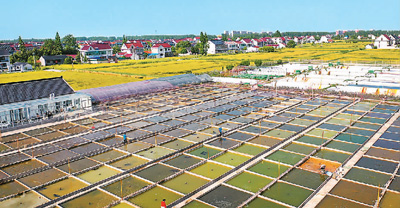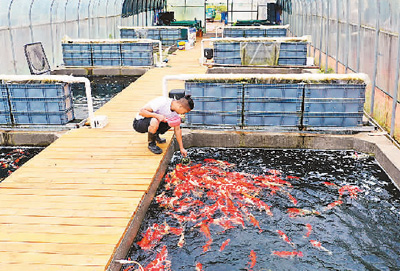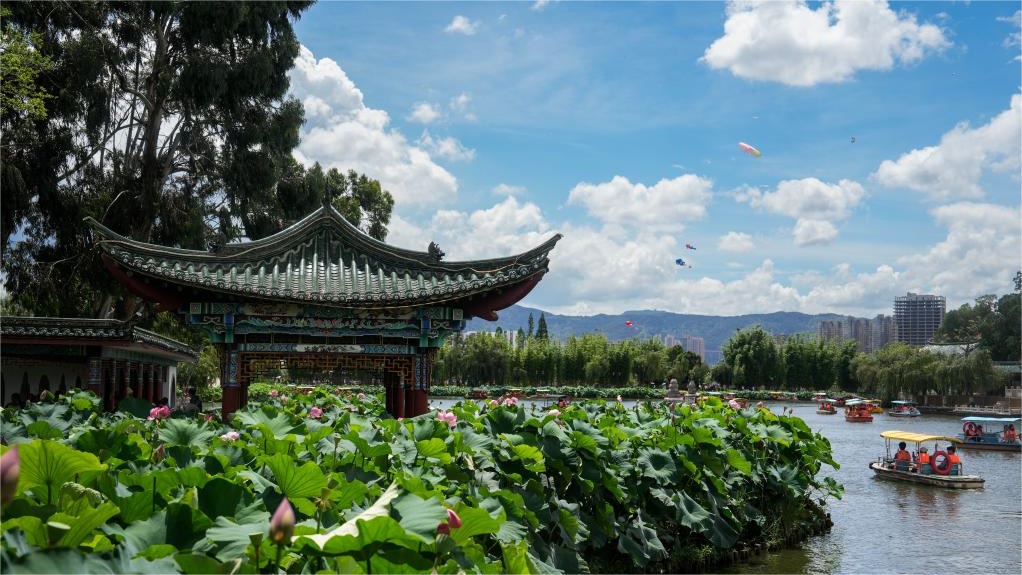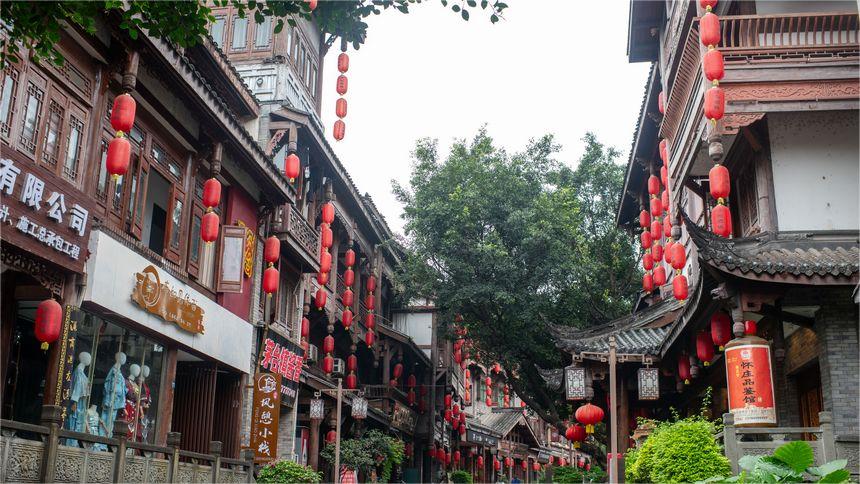Annual output value of China's ornamental fish sector exceeds 10 billion yuan

Photo shows an ornamental fish farm in Tangwan village, Rugao city, east China's Jiangsu Province. (Photo/Xu Hui)
The annual output value of China's ornamental fish sector has topped 10 billion yuan ($1.37 billion).
On June 21, the Ministry of Agriculture and Rural Affairs (MARA) encouraged regions across the country to support and guide the development of the sector according to local conditions.
In 2022, China raised 3.56 billion ornamental fish, with the output value reaching 11.09 billion yuan.
Zhao Wanping, vice president of the Anhui Academy of Agricultural Sciences, said that in 2022, China's ornamental fish sector accounted for 13.22 percent of the total output value of the country's recreational fishery industry, which reached 83.93 billion yuan. That year, the ornamental fish sector showed the fastest year-on-year growth rate among all categories in the recreational industry.
According to market research, the market size of the aquarium pet market has seen a compound annual growth rate of 11.8 percent in the last five years, with fish accounting for a large share. Small ornamental fish have gained popularity among young Chinese, many of whom keep them on their office desks.
A report jointly released by Chinese e-commerce platform Taobao and other organizations reveals that keeping fish on desks in the office has become one of the main forms of consumption in the aquarium pet industry. Forty-two percent of surveyed consumers kept fish to relieve stress, while 16 percent and 15 percent did it to decorate their workspace and out of personal interest respectively. Meanwhile, 57 percent of surveyed consumers spent 1,000 to 3,000 yuan annually to keep fish on desks in the office, and 10 percent of surveyed consumers paid more than 5,000 yuan a year for the activity.

A technician feeds fish at an ornamental fish farm in Tuzhou village, Taihe county, Ji'an city, east China's Jiangxi Province. (Photo/Deng Heping)
According to industry experts’ analysis, China has seen an increasingly large consumer base for ornamental fish in recent years, with people keeping fish both at their homes and on their office desks. This has significantly driven the expansion of the ornamental fish market.
Fancy carp, which are sought-after ornamental fish as they represent auspiciousness and good luck in Chinese culture, are becoming the calling card for Jinan, capital city of east China's Shandong Province.
Jinan ranks among the top cities in China in terms of the farming and market size of fancy carp, with an economic output of 400 million yuan, said an official from the Jinan bureau of agriculture and rural affairs.
By 2025, Jinan plans to establish two to three fancy carp industrial parks and 10 demonstration bases, which are expected to support over 40 fancy carp enterprises above designated size.
South China's Guangdong Province is home to the largest distribution center of fancy carp in the country, producing about 80 percent of mid-to-high-end fancy carp nationwide. Zhenping county in central China's Henan Province produces 60 percent of the country's fancy carp, which are exported to Europe.
Other regions are also developing thriving ornamental fish sectors, including Chongqing Municipality and Fujian and Liaoning provinces.
Yanwan village in Tongliang district of Chongqing produces more than 90 million ornamental fish fry annually, including over 30 varieties such as fancy carp.
Home to more than 80 goldfish farms, Fuzhou city in Fujian exports goldfish to over 10 countries and regions, including Japan and the U.S.
Anshan city in Liaoning is building a distribution center for ornamental fish in northeast China, with the production of guppies making up about 70 percent of the country's total.
To further promote the healthy development of the ornamental fish sector, MARA will actively include the sector in corresponding development plans.
Zhao suggested carrying out research and development of breeding techniques and building standardized farming bases in major ornamental fish-producing areas according to relevant development plans. Zhao also called for tourism industrial parks themed on ornamental fish that integrate farming, research, science popularization, and leisure tourism to be established in places including Beijing, Guangdong, and Shanghai.
The development of the ornamental fish sector is inseparable from efforts such as collection and protection of germplasm resources. MARA will strengthen policy support for the breeding of ornamental fish to provide a solid foundation for the growth of the sector.
Photos
Related Stories
- Blind fish species found in China's underground stream
- New cave-dwelling fish species discovered in south China's Guangxi
- Fish farms turn murky waters clear in Liaoning
- Leopard coral grouper breeding thrives in S China's Hainan
- In pics: floating fish farms in Lhokseumawe, Indonesia
- Fishermen engage in winter fishing in Zhangshu, E China's Jiangxi
- Trending in China | A winter fish feast in Northeast China
Copyright © 2024 People's Daily Online. All Rights Reserved.









